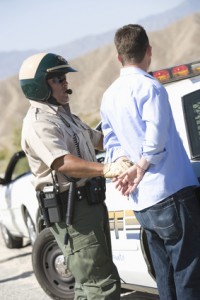By Staff Reports
(DGIwire)– Realistic TV dramas have introduced viewers to some of the advanced technologies used by crime-scene investigators. But they aren’t the only law enforcement personnel benefitting from technology; police officers across the nation have an arsenal of high-tech devices to help them investigate and solve cases.
Here’s a look at four tech tools, reported by Computerworld, that are being used or tested by police to protect their communities.
- Robotic cameras. When it’s too dangerous to send a police officer into an active crime scene—or in any situation where there’s no clear line of sight—police can rely on a throwable robotic camera. The device has an electric motor and wheels allowing it to move, climb and explore at the whim of an officer who operates it wirelessly. It is much less risky than sending in a live police dog to scope out potential dangers.
- Gunshot detection systems. Carefully placed electronic sensors can be installed throughout a high-crime neighborhood to help pinpoint the exact source of gunfire. This technology is especially useful in areas where shots are fired frequently and witnesses are scarce or hesitant to talk. The gunshot data can then be combined with mapping and analytics tools in attempt to further determine who is doing the shooting.
- Flying police drones. Although their use raises privacy concerns among critics, flying robotic drones equipped with cameras can give officers a bird’s-eye view of crime scenes and other dangerous situations as they unfold. The Federal Aviation Administration has granted licensing approval to the Miami-Dade Police Department in Florida to test an aerial camera drone developed by Honeywell International.
- GPS vehicle pursuit darts. Sounding like something James Bond would love, this system shoots a special GPS-equipped dart that adheres to a fleeing vehicle and allows authorities to track the vehicle’s movements from a safe distance without a frantic pursuit. The darts are aimed using a laser and then fired with an air-compressor-powered mechanism from the grille of a police car.
Yet another helpful tool is real-time mobile data information systems. COPsync, Inc., a company based in Dallas, TX, is building the largest law enforcement real-time mobile data information system in the country. Known as the COPsync Network, it enables patrol officers to report and share critical data in real-time at the point of incident, with officers able to obtain instant access to local, state and federal law enforcement databases. Meanwhile, the company’s COPsync911 threat alert service provides schools and other high-risk buildings a direct communication link to local officers in their patrol units.

